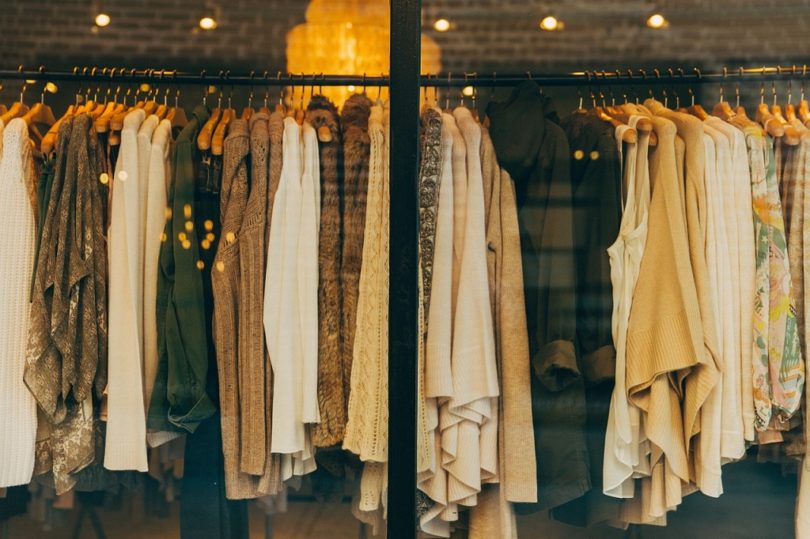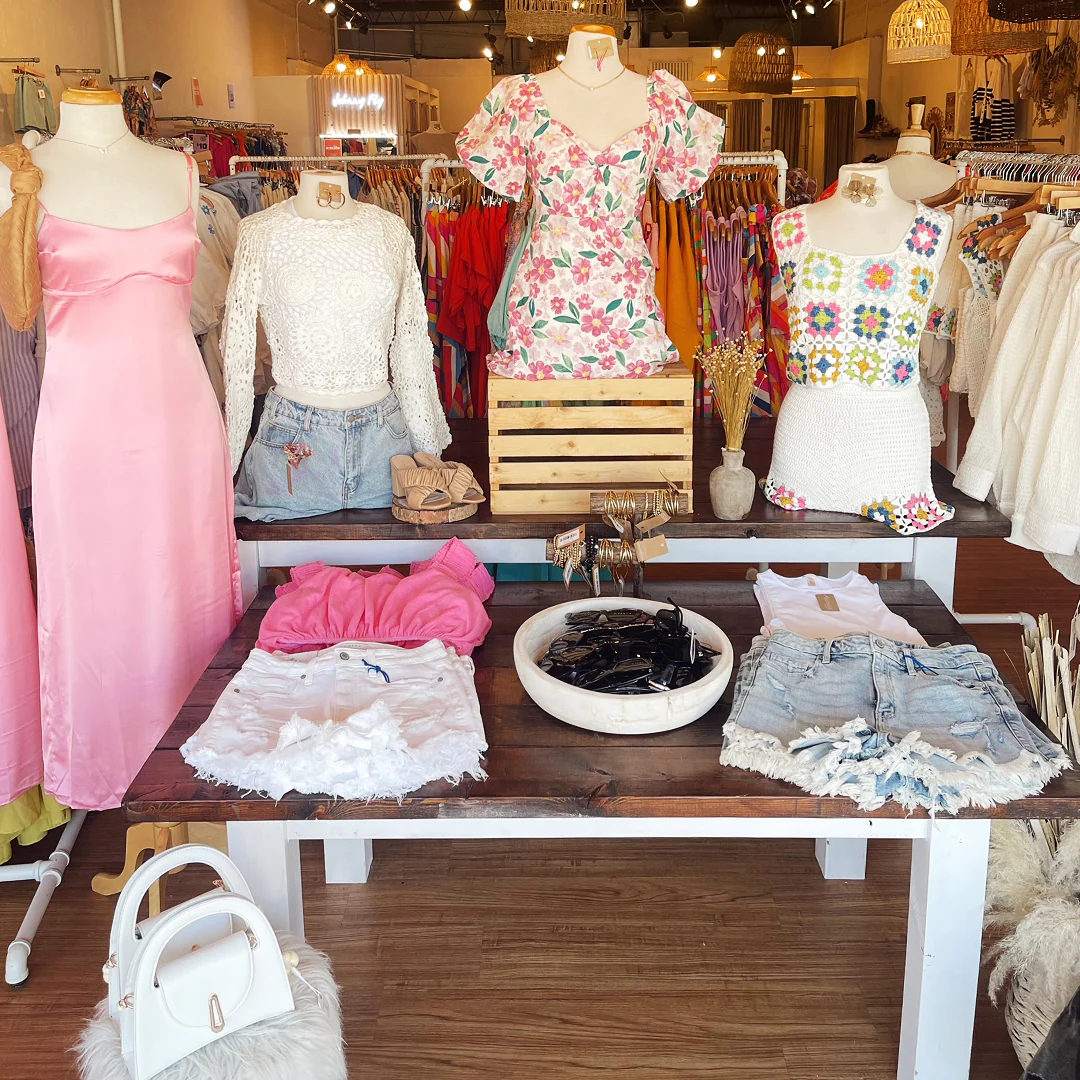Revealing the Keys Behind Budget-friendly Boutique Fashion
Revealing the Keys Behind Budget-friendly Boutique Fashion
Blog Article
Lasting Fashion: Exactly How Eco-Friendly Apparel Is Shaping the Future of Style
As the garment industry faces boosting examination over its ecological effect, the rise of lasting fashion offers a promising alternative that lines up style with environmental duty. Employing innovative products such as plant-based materials and recycled fibers, alongside innovative techniques like electronic and 3D printing, designers are redefining what it implies to be classy in the contemporary age. Simultaneously, the expanding appeal of upcycling and second hand society is fostering a shift in the direction of a circular economic climate. Yet, how does this motion really affect the future trajectory of style, and what difficulties lie ahead in its extensive fostering?
Innovative Sustainable Materials
As the fashion sector grapples with its environmental influence, ingenious sustainable products have arised as an important remedy for reducing eco-friendly footprints. These products not just minimize reliance on fossil fuels however also reduce unsafe chemical use and water intake.
Along with plant-based materials, developments in biofabrication have actually caused the development of lab-grown fabrics. Mycelium leather, stemmed from mushroom origins, presents a flexible and eco-friendly alternative to animal leather. Its production causes significantly lower carbon discharges and water usage, making it a more lasting option for designer seeking to line up with eco-friendly techniques.
Recycled materials are additionally gaining traction, with polyester made from recycled plastic containers representing a substantial breakthrough. This innovation not just diverts plastic waste from seas and land fills yet also lowers power usage compared to generating virgin polyester. Together, these products emphasize the possibility for a more sustainable apparel industry, leading the way for ecologically aware layout and manufacturing.
Eco-Conscious Production
Building on the technologies in lasting materials, the fashion business is additionally re-evaluating its manufacturing procedures to even more minimize environmental effect. Trick techniques consist of reducing water intake, lowering carbon emissions, and removing hazardous chemicals. By embracing closed-loop systems, suppliers intend to recycle water and energy effectively, dramatically diminishing waste. The combination of renewable resource resources, such as solar and wind power, into production facilities better stops reliance on fossil gas.
One more crucial element is the reduction of toxic chemicals typically used in dyeing and finishing fabrics. Eco-conscious producers are changing towards plant-based dyes and waterless dyeing modern technologies, which not only safeguard regional ecosystems however likewise improve worker security. Innovations like electronic printing minimize fabric waste and energy intake, supplying a cleaner option to typical techniques.
With the improvement of blockchain modern technology, firms can currently supply comprehensive understandings into their supply chains, making certain moral and eco friendly practices at each action. As the need for eco-conscious products expands, makers are forced to introduce, making certain that the future of fashion is both lasting and fashionable.
The Rise of Upcycling
Upcycling, a transformative technique in lasting fashion, entails creatively repurposing thrown out materials into new, high-quality products. This ingenious strategy not only reduces waste however additionally decreases the need for basic materials, thereby decreasing the ecological effect of garments production. By reimagining and reconstructing existing products, designers and fashion brands are able to instill creativity into their collections while advertising ecological duty.

In addition, the upcycling activity has actually empowered independent developers and small Check This Out services, who usually lead in advancement because of their agility and creativity. By exploiting on the abundant accessibility of extra materials, these entities add to a circular economy, demonstrating that style can be both lasting and fashionable. With upcycling, the market takes considerable strides towards an extra liable and mindful future.
Thrift Society's Effect
The expanding second hand culture substantially improves the landscape of lasting fashion, highlighting the relevance of mindful usage. This cultural shift encourages customers to accept secondhand clothing, therefore reducing the need for brand-new garment manufacturing and lessening environmental influence. Thrift shopping not only prolongs the lifecycle of clothes however likewise decreases the carbon footprint connected with production, delivering, and throwing away clothing.
A vital element of second hand society is its democratization of style. By providing a wide array of designs from numerous eras at cost effective prices, thrift shops make style easily accessible to a broader target market. This accessibility cultivates a sense of originality and creativity, as customers mix and match unique items to curate tailored wardrobes without adding to the rapid style cycle.
Additionally, second hand society advertises circularity in fashion, straightening with the concepts of a circular economic situation. As even more developers and consumers accept thrift culture, the style industry is urged to adjust, incorporating sustainable techniques to satisfy the expanding demand for eco-conscious alternatives.

Future Trends in vogue
Style's advancement is progressively shaped by technical technologies and sustainability-driven initiatives. One prominent pattern is the increase of digital fashion, where virtual garments can be used in enhanced reality settings, considerably minimizing textile waste.
Moreover, the integration of blockchain modern technology supplies brand-new possibilities in transparency and traceability, enabling customers to verify the sustainability credentials of their garments. boutique fashion. This guarantees responsibility in supply chains and promotes ethical sourcing methods. 3D printing is yet another advancement that promises to change making procedures by making it possible for on-demand manufacturing, thus lowering excess supply and waste
As these innovations develop, they are poised to change the fashion landscape, combining design with sustainability. The future of fashion, for that reason, lies in a seamless blend of modern technology, innovation, and ecological responsibility.
Conclusion
The improvement of the fashion sector with sustainable methods shows an essential change towards environmental accountability. This evolution not only straightens fashion with eco-friendly sustainability however likewise sets a criterion for future patterns concentrated on responsibility and development.
As the fashion Related Site sector encounters boosting scrutiny over its ecological effect, the surge of lasting style uses an encouraging choice that lines up style with environmental duty.As the fashion market grapples with its environmental effect, ingenious lasting products have actually emerged as an essential option for reducing ecological footprints. With each other, these materials highlight the potential for a much more lasting fashion sector, leading the way for environmentally aware design and manufacturing.
Structure on the technologies in sustainable products, the style industry is additionally re-evaluating its production procedures to better decrease ecological effect. boutique fashion.Upcycling, a transformative technique in sustainable fashion, entails artistically repurposing disposed of products into new, premium items
Report this page